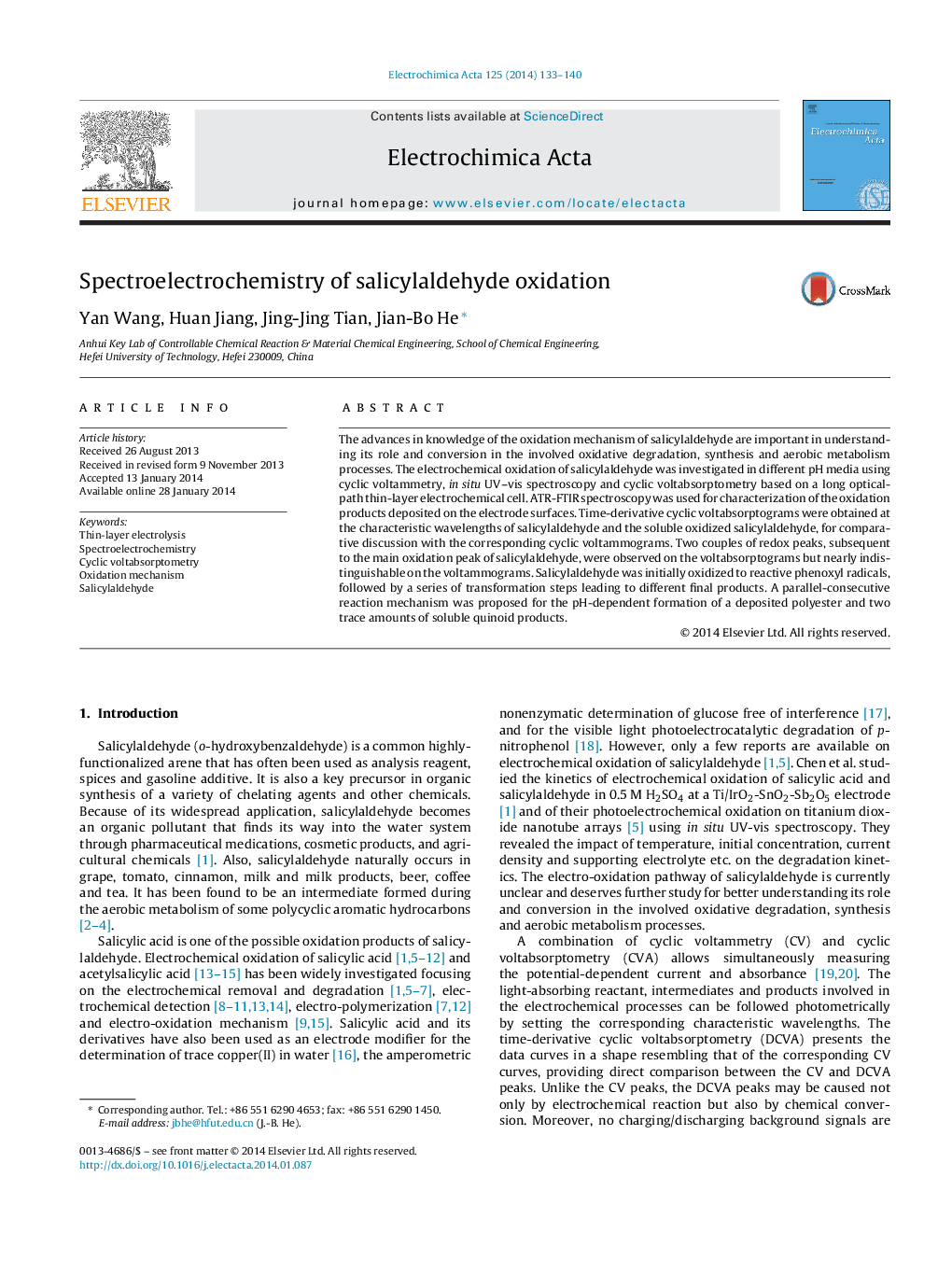| Article ID | Journal | Published Year | Pages | File Type |
|---|---|---|---|---|
| 186206 | Electrochimica Acta | 2014 | 8 Pages |
•Double-wavelength cyclic voltabsorptometry used for oxidation of salicylaldehyde.•Enhanced observation of trace amounts of redox couples.•Highly pH-dependent oxidative pathway of salicylaldehyde.•A complex parallel-consecutive mechanism proposed for oxidation of salicylaldehyde.
The advances in knowledge of the oxidation mechanism of salicylaldehyde are important in understanding its role and conversion in the involved oxidative degradation, synthesis and aerobic metabolism processes. The electrochemical oxidation of salicylaldehyde was investigated in different pH media using cyclic voltammetry, in situ UV–vis spectroscopy and cyclic voltabsorptometry based on a long optical-path thin-layer electrochemical cell. ATR-FTIR spectroscopy was used for characterization of the oxidation products deposited on the electrode surfaces. Time-derivative cyclic voltabsorptograms were obtained at the characteristic wavelengths of salicylaldehyde and the soluble oxidized salicylaldehyde, for comparative discussion with the corresponding cyclic voltammograms. Two couples of redox peaks, subsequent to the main oxidation peak of salicylaldehyde, were observed on the voltabsorptograms but nearly indistinguishable on the voltammograms. Salicylaldehyde was initially oxidized to reactive phenoxyl radicals, followed by a series of transformation steps leading to different final products. A parallel-consecutive reaction mechanism was proposed for the pH-dependent formation of a deposited polyester and two trace amounts of soluble quinoid products.
